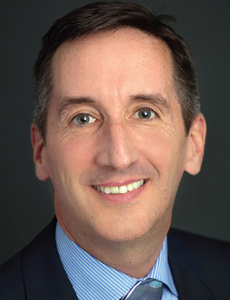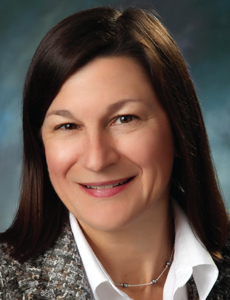Affordable Care Act
More Accountable Care

More physicians are selling their practices and becoming employees of larger entities, as the Affordable Care Act encourages the creation of expanded accountable care organizations.
So far, underwriters are viewing the trend as a positive, with improved risk management practices and less “finger-pointing” between hospitals and doctors during the claims resolution process, as all parties are now covered under the employers’ professional liability policies (physicians working as employees typically no longer buy medical malpractice insurance.)
But as more patients are served under this model, experts said, certain issues need to be ironed out, such as whether health care organizations can meet new “pay-for-performance” metrics and whether they are buying as much limits as they should to adequately handle jury awards.
Berkshire Hathaway Specialty Insurance views the ongoing migration of physicians toward institutional employment as a favorable trend, both for the individual practitioner as well as for the institution employing them, said Leo Carroll, head of healthcare professional liability.
“Physicians are less distracted and burdened by some of the administrative responsibilities of running a practice, by handing that over to the institution to manage,” Carroll said.
Physicians benefit when they join an institution’s risk management program, in part by being able to use a common medical record system, usually electronic, to help to optimize technological efficiencies and promote consistent communication, he said.
Moreover, communication between physicians and institutions within the employment model generally is “a little tighter and more efficient,” as comprehensive treatment plans can be shared more effectively across a unified team.
Physicians are also integrated into a larger insurance program overseen by the institution, which allows them access to broader risk management training and promotes more time with patients, Carroll said.
Claims can also be resolved more efficiently because the “finger-pointing” between doctors and hospitals under separate insurance policies has been eliminated, and the cost of a coordinated defense using one law firm is typically much lower.
Still, a unified approach to resolving conflict “does come with compromise for all involved,” so that claims can be resolved in the best interests of all parties, Carroll said.
“The future is a pay-for-performance environment.” — Bob Allen, president, Pro-Praxis Insurance
“It’s really important for physicians to be open and well-informed about the culture of the institution they are joining,” he said.
“They need to make sure to understand that there may be differences in the way that care is delivered and what the expectations are of the physicians by the institutions.”
Medical specialists are also making the switch, said Mary Ursul, executive vice president at Coverys, a Boston-based provider of medical professional liability insurance.
In recent years, Coverys has seen instances where independent cardiologists in a community all become employed by a health system, Ursul said.
“Whether it is the push to upgrade equipment, implement electronic medical records, the uncertainty of future private payer and government reimbursement, or the predicted shortage of health care providers, the shift away from independence seems to be heavily weighted towards financial concerns,” she said.
The ACA’s call for more integrated care delivery is also prompting the move toward employment — as well as the increasing trend of hospitals and health care organizations to also acquire acute care, post-care, rehabilitation facilities and other entities across the health care delivery system, Ursul said.
As larger entities acquire physician practices, there are certain training protocols that should be considered to minimize risk exposure, she said.
“For example, something as simple but important as a new patient intake process within an unfamiliar electronic medical record can create situations where risk exposure can increase without sufficient training,” Ursul said.
“That could be a steep learning curve for staff in a physician’s medical office, therefore, time, training and appropriate resources are all important to make the transition smooth and to ensure that clinical information is handled appropriately so that risk can be reduced.”
While Coverys offers comprehensive clinical risk management services to its insured independent physicians, the carrier finds that not all physicians have access to such services, she said.
Coverys advises hospitals acquiring physician practices to conduct risk management assessments as soon as practical, a service that the carrier provides to insured hospitals.
“These assessments can provide a baseline of data on processes, possible gaps in best practices, and assist in determining what type of education and training staff may need,” Ursul said.
One benefit to being acquired is often access to professional clinical risk management resources through the hospital’s risk management department.
“This may not actually be viewed as a benefit from the physician side of the transition as physician practices are largely unregulated, so the level of oversight may be viewed as burdensome,” she said.
As hospitals and health care organizations acquire more physician practices and other entities throughout the health care spectrum, the risk in maintaining “the health of the community” becomes the new issue, said Bob Allen, president of Pro-Praxis Insurance in New York.
The Importance of Care Coordination
To manage the health within a patient population, there has to be coordinated care across physicians, hospitals and rehab services, Allen said.
“For example, one entity says that it can take care of all of the diabetes cases in its region for x number of dollars, and so the ‘risk’ is being able to have the hospital and the doctors on the same page to be able to take care of those cases at or under that targeted dollar amount,” he said.
That exposure is also translated into the financial risk of taking a flat fee for a particular type of care, what is known in the industry as a “capitated risk,” Allen said.
If a health insurer agrees to give a hospital and its physician network a flat fee to treat 1 million people in its area, the insurer may pay for office visits, including annual checkups, but it likely won’t pay if the network provides poor quality of care.
Insurers are now measuring that by “quality indicators,” he said. Insurers are increasingly reviewing the number of surgical infections or falls during hospital stays that occurred due to poor quality treatment or follow-up after surgeries, and determining whether the rates are too low, high enough or whether not to pay.
“The future is a pay-for-performance environment,” Allen said.
“If the network doesn’t perform well, it doesn’t get paid for services rendered — that’s the risk. It’s more of a business risk than a typical malpractice risk.”
To mitigate this financial risk, hospitals and physicians have to be on the same page, have greater collaboration, and “probably” the best way to do that is within an employer/employee structure, he said. Historically physicians had hospital privileges as independent contractors, but now as employees, there is better management of making sure doctors do checklists before performing surgery.
“As an integrated group, there are resources and rules for who will do the follow-up calls after surgery to make sure stitches are not going to be ripped open,” Allen said.
Pro-Praxis offers a professional liability program that covers every entity within the network — hospital, physicians and other employees such as certified nurse assistants, as well as other entities that hospitals have been acquiring such as nursing homes and outpatient surgery centers, as part of providing a continuum of care, he said.
Professional liability has taken the place of medical malpractice for individual physicians, Allen added.
For example, a hospital may pay $1 million in premiums, but after it brought a physician group of five doctors who each used to pay $100,000 in premiums for medical malpractice insurance, the hospital would now pay a total of less than $1.1 million in premiums.
In addition to less “finger-pointing” with a joint defense, typically the new employer/employee structure can result in “behavioral changes.”
“That is not to say that physicians didn’t behave well before, but now the hospital can better manage treatment and follow-up, and the workflow of all of its employees,” he said.
For insurers, the biggest challenge with the new structure pertains to policy limits, Allen said. Under the traditional structure, hospitals typically have a $2 million limit for professional liability and physician groups have a $1 million limit for malpractice. If they were sued and the jury awarded $3 million, the two entities could cover it with their respective limits.
“But now that there is no more sharing and just one health system that has to pay that $3 million jury award, the hospital would now have to pay $1 million out of pocket because its limit is still $2 million,” he said.
“This hasn’t happened yet, but from an underwriter’s perspective, we are concerned about loss allocation.”
Some health care organizations have been buying more limits and have been paying more in premiums, so they won’t have to pay out-of-pocket, something the insurers are hoping more will do as their exposure to losses increases.
“They have to be careful now that they’ve brought on all of those physicians as employees,” Allen said.
“Our job is to figure the impact of losses on how much limits they should get, and there is no hard data on that, yet.”













